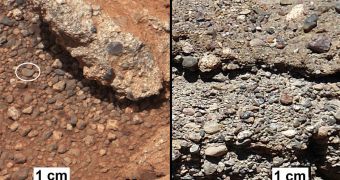Researchers at the Portland State University (PSU) Center for Life in Extreme Environments have found in a new study that many bacteria can survive in very extreme conditions, such as when encased in glass. The research has significant implications for our search for life on other plants, such as Mars.
For this study, the team focused on four species of viruses, which were all encased separately in the same type of silica particles that make up glass. One of the viruses proved incapable of surviving such harsh isolation, but the other three simply entered hibernation.
This is a protection and conservation mechanism that allows many microorganisms to endure extremely difficult conditions. The bacteria or viruses remain in their sleep mode until environmental conditions around them change, and they deem it suitable to try living again.
In the new study, the three surviving viruses only returned to life once researchers removed the glass coating around them. This data suggests that lifeforms may still endure on planets such as Mars, or even on asteroids and comets, encapsulated in tiny glass or rock beads.
The American space agency funded this investigation precisely because it currently operates two active orbiters on the surface of the Red Planet, both of which are looking for signs to confirm that Mars may have once been hospitable for the development of life.
“I'm convinced there are viruses in the rock record, but we don't have the technology to detect them. We really need to develop the technology here before we can even think about going to look there [on Mars]. We're trying to do just that,” says CLEE researcher Kenneth Stedman.
The scientist, who holds an appointment as an associate professor of biology at PSU, was a member of the team that conducted the research. The group was led by graduate student James Laidler. The viruses that were selected for this research were carefully selected, the team says.
“The reason we tested desiccation is there are some rather strange data, particularly in hot spring viruses, that seem to indicate that these hot spring viruses are getting from one hot spring to another relatively quickly on a geologic time scale,” Stedman says, quoted by Astrobiology Magazine.
Additional details of the new study will be published in the December 15 issue of the esteemed Journal of Virology. The investigation was supported by the NASA Astrobiology Institute and the US National Science Foundation (NSF).

 14 DAY TRIAL //
14 DAY TRIAL //